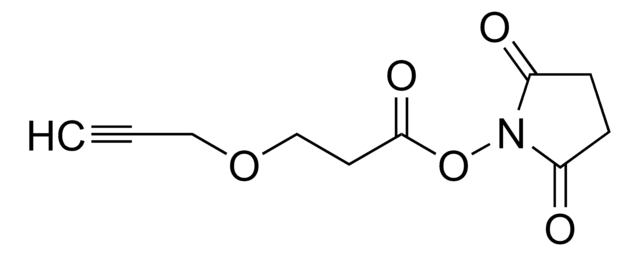910007
20-Azido-3,6,9,12,15,18-hexaoxaicosanoic acid
95%
Sinônimo(s):
Azido-PEG6-CH2CO2H, Azido-PEG6-acid, N3-PEG6-CH2COOH
About This Item
Produtos recomendados
Ensaio
95%
forma
(Liquid or Semi-Solid or Paste or Solid)
adequação da reação
reaction type: click chemistry
reagent type: cross-linking reagent
grupo funcional
azide
carboxylic acid
temperatura de armazenamento
2-8°C
cadeia de caracteres SMILES
OC(COCCOCCOCCOCCOCCOCCN=[N+]=[N-])=O
Aplicação
Informações legais
produto relacionado
Código de classe de armazenamento
10 - Combustible liquids
Classe de risco de água (WGK)
WGK 3
Ponto de fulgor (°F)
Not applicable
Ponto de fulgor (°C)
Not applicable
Certificados de análise (COA)
Busque Certificados de análise (COA) digitando o Número do Lote do produto. Os números de lote e remessa podem ser encontrados no rótulo de um produto após a palavra “Lot” ou “Batch”.
Já possui este produto?
Encontre a documentação dos produtos que você adquiriu recentemente na biblioteca de documentos.
Nossa equipe de cientistas tem experiência em todas as áreas de pesquisa, incluindo Life Sciences, ciência de materiais, síntese química, cromatografia, química analítica e muitas outras.
Entre em contato com a assistência técnica








